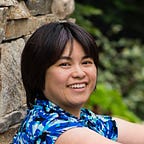Resume Tips
Know Your A and C to Find Your B
The beginning and the end will guide us toward the middle.
When I was an aspiring screenwriter, one of the big lessons I learned was to know the beginning of the story and the end.
Why?
Because for one, the story will just keep going and going and going if the ending is unknown when pages and time are limited.
Two, knowing the starting point and the ending point will actually guide us to create a middle section that will connect them together.
Writing resumes needs to adopt the same approach.
Starting Point
We all have to start somewhere.
Where are we currently in our education? Where are we currently in our experience? What are our strengths? What are our weaknesses?
All those assessment tests and work we put into figuring out our personal brand are attempts to identify our starting point.
Simple (or as some of us may believe).
Ending Point
The ending point is a little more…fluid.
Some of us know exactly where we want to end up.
Some of us know where our next destinations are.
And some of us do not have a clue.
In that case, we have some work to do.
Now, in my articles Connecting the Dots on Your Resume Part 1, The Exploratory Resume, and Generalists Can Play in the Specialists’ Sandbox, I advocated for generalists who have innately strong curiosity about a lot of disciplines we encounter.
I still maintain that curiosity is an incredibly valuable trait because it is the source of creativity and advancement.
But we can still have direction even when we wander.
The key is our willingness to learn about the disciplines we are curious about, one at a time.
Any inkling of willingness urges us to get a little deeper into the discipline, and this urge gives us direction as to what we want to pursue next.
The Middle
The middle is nearly always the most difficult part for screenwriters.
Not only does it have the tough job of connecting the start and the end, but every scene needs to be relevant and sensible. Any scene or character that is neither of those things will end up on the cutting room floor.
The same can be said of resume writing.
Once we know — and own up to — who we are and research what is involved in where we want to go next, we will have an easier time identifying which parts of our past experience are applicable.
That is what majority of tailoring resumes is all about, deciding what is relevant for the next desired position.
Flexibility
Just because the ending has been decided does not mean it is set in stone.
In screenwriting, if the set ending turns out to be improbable based on the characters’ personalities and on the series of event, then the ending can be changed to a more fitting one.
For the resume and job search, we do not have to be completely set on one particular role. I believe we as human beings are fit and versatile enough for a number of different but similar roles.
In fact, I recommend looking at different positions based on their responsibilities, not titles because many industries do not have clear distinctive definitions for a number of them.
So the choice is ours.
If there are multiple types of roles we are interested in, then it is in our power to target whichever role we want whenever. What we need to do then is to check our relevant accomplishments in our past.
This makes writing resumes a whole lot easier.
